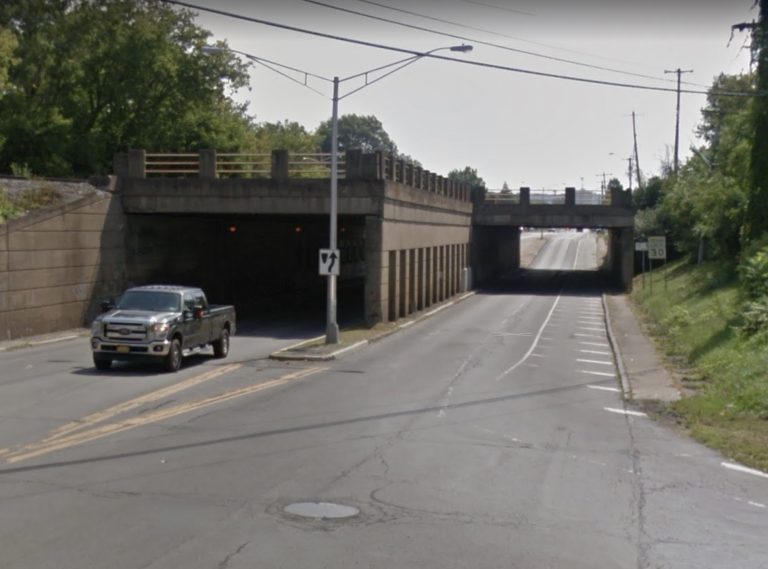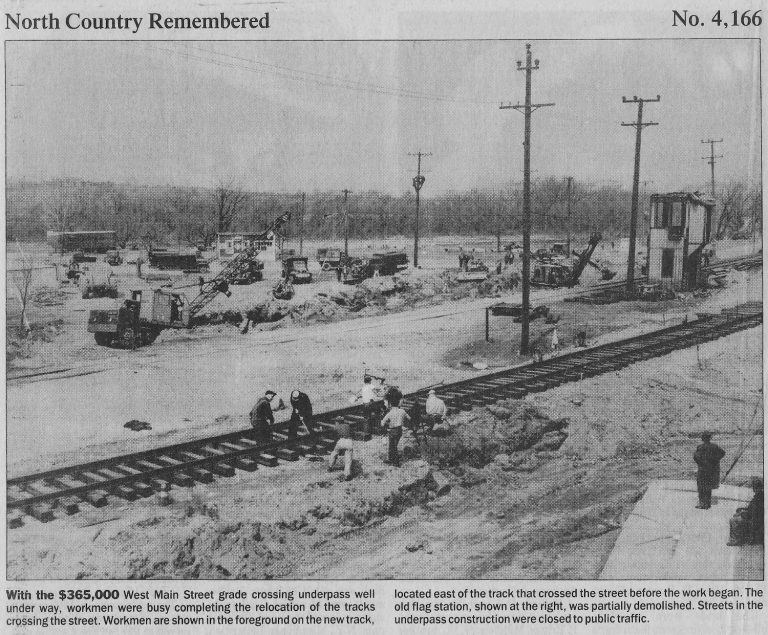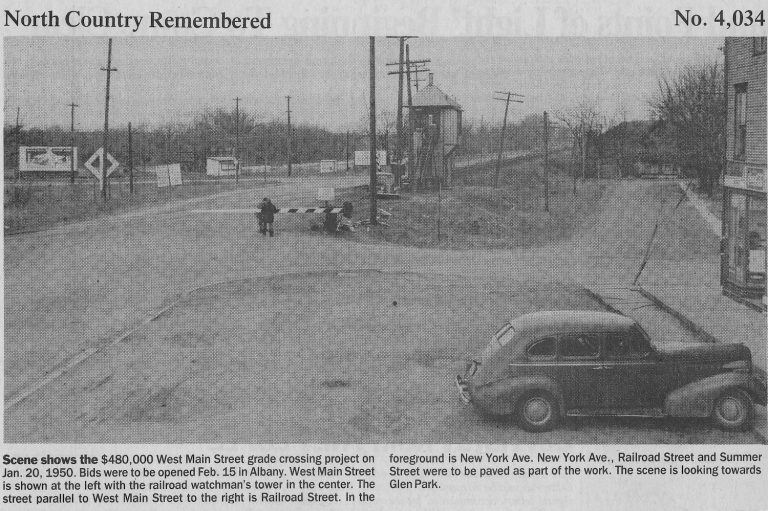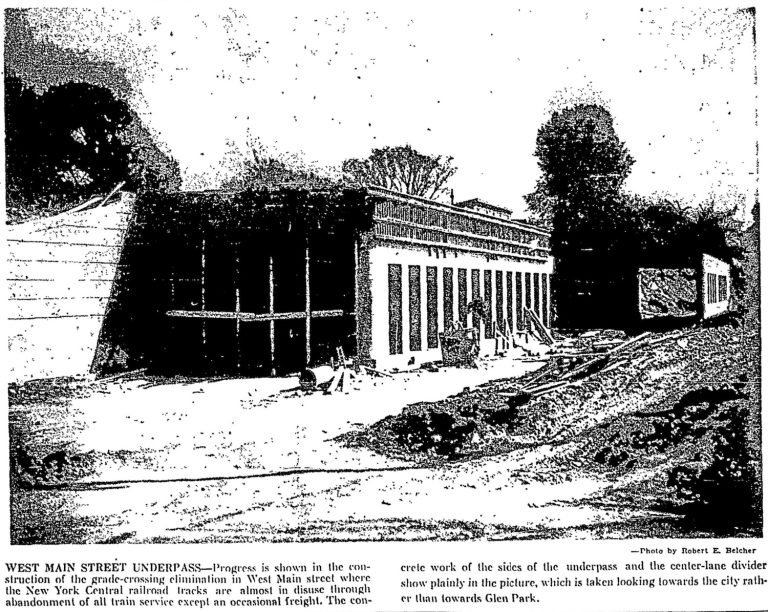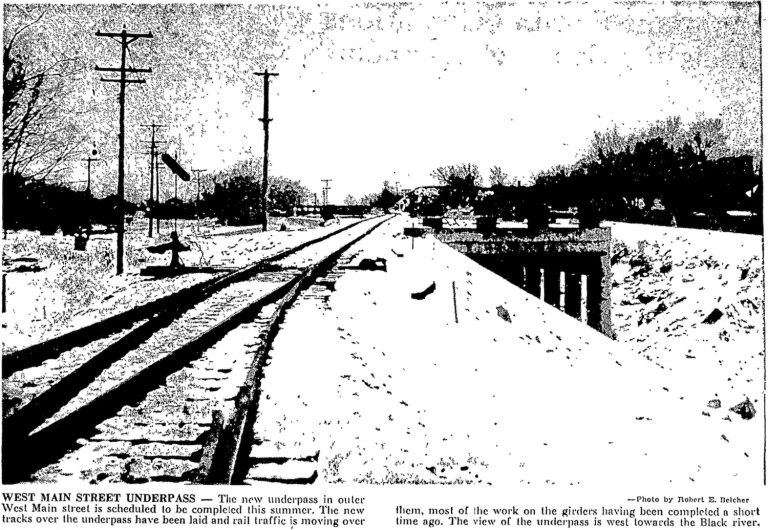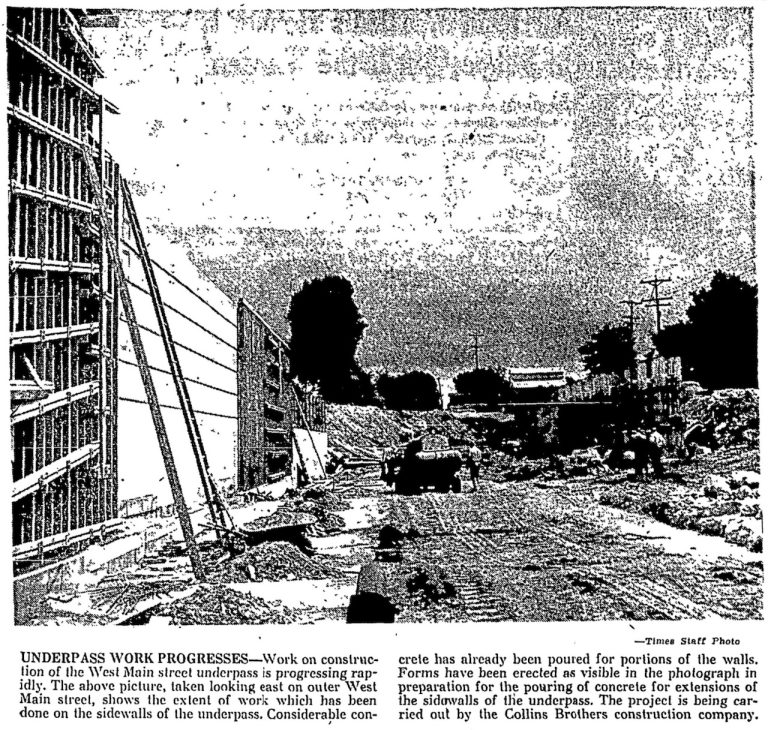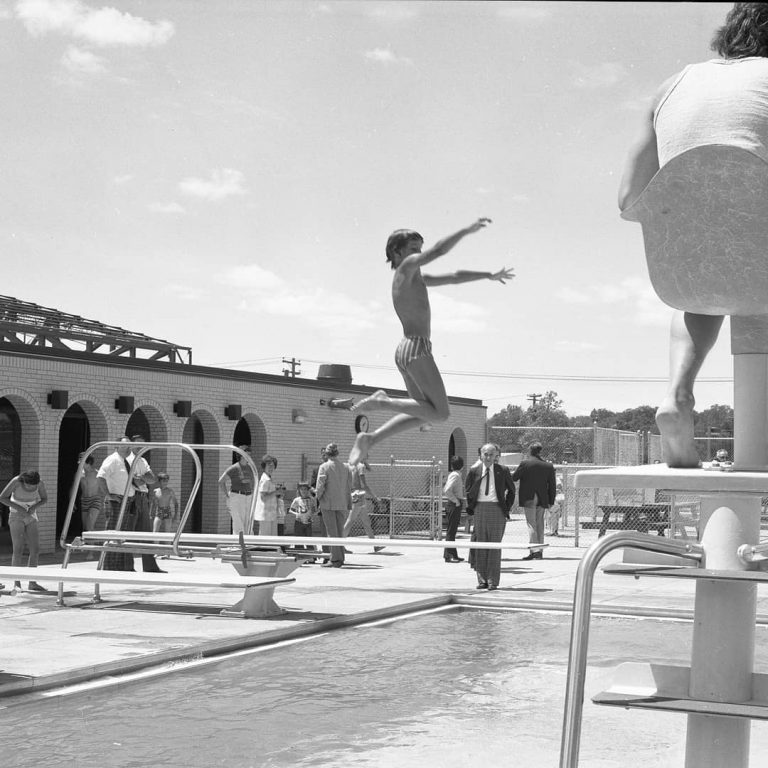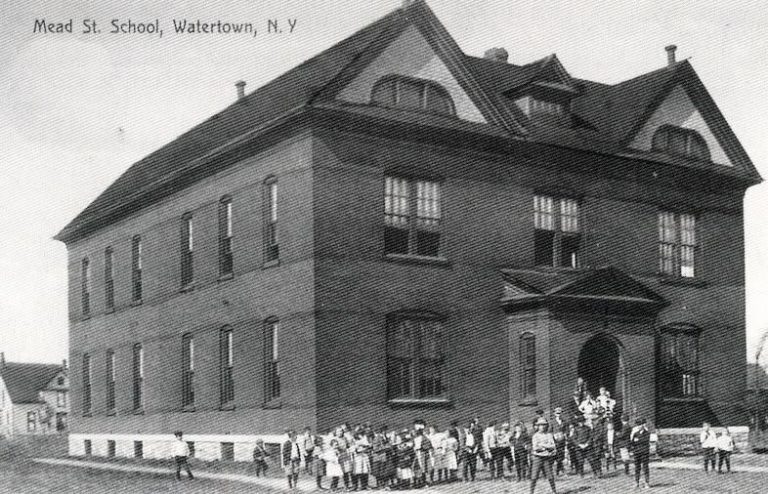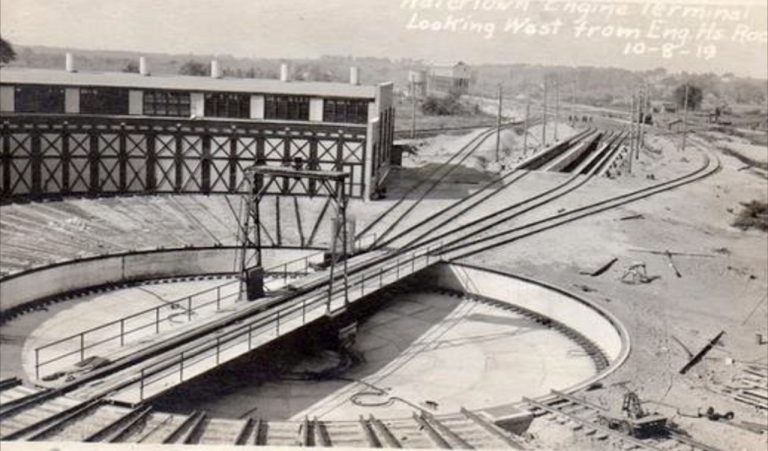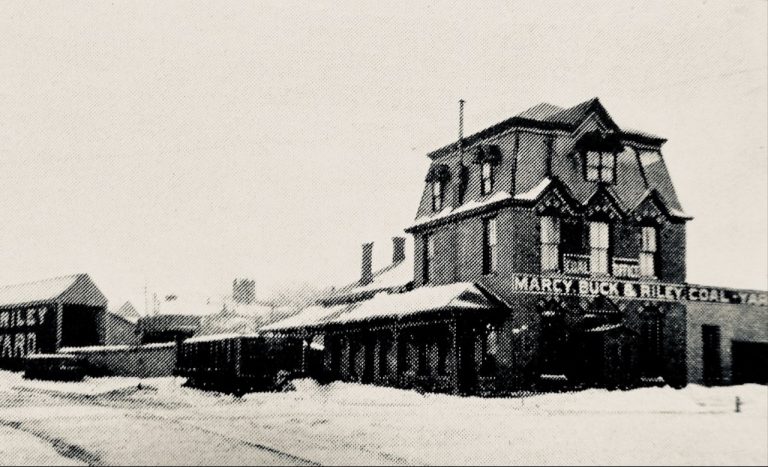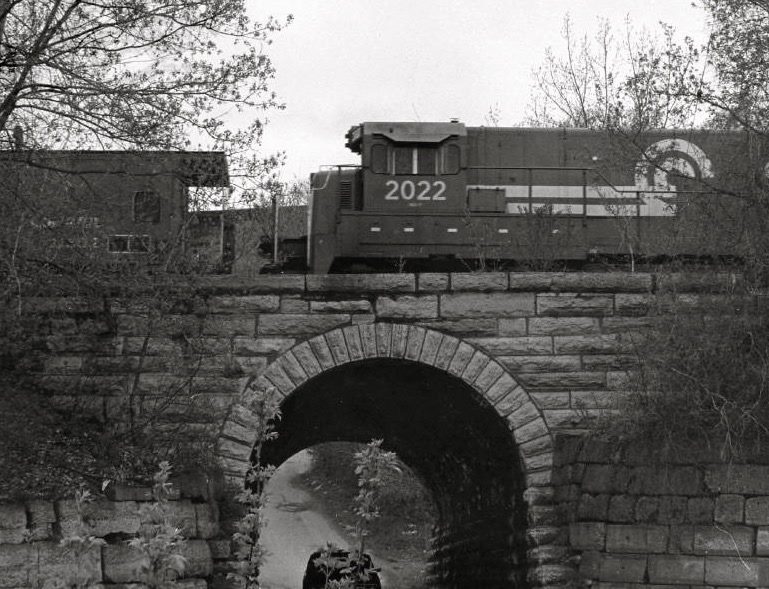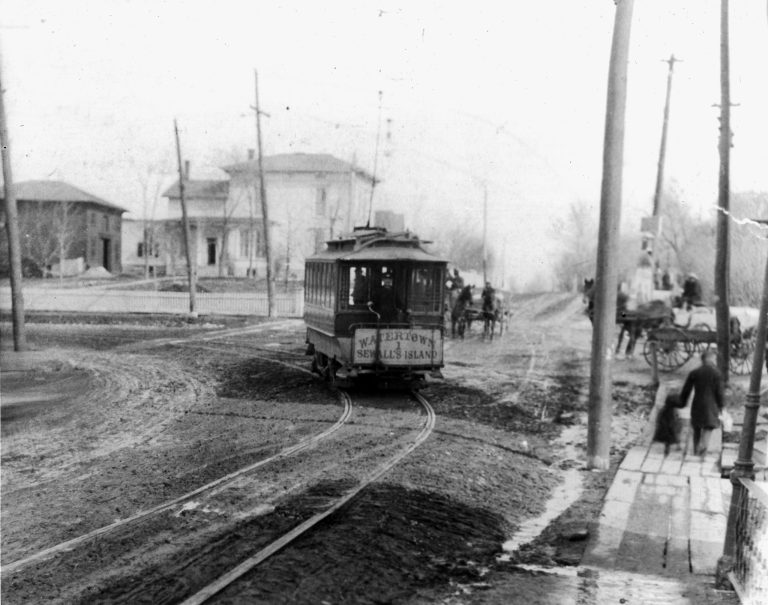The West Main Street Grade Crossing’s Long Gestation Finally Sees Proposed Railroad Safety Measures Built In 1951
The West Main Street grade crossing project was finally recommended by state, city, and county officials on July 9, 1931, years after measures had been implemented to improve safety for pedestrians and motorists in other areas of Watertown in the 1910s and 20s, including the elimination of all grade crossings with the construction of the new Court Street Bridge. The proposal was to build an underpass for motorists, with the trains on the Cape Vincent line passing overhead, eliminating the potential risks for collisions and traffic stoppage with an estimated cost of $146,600.
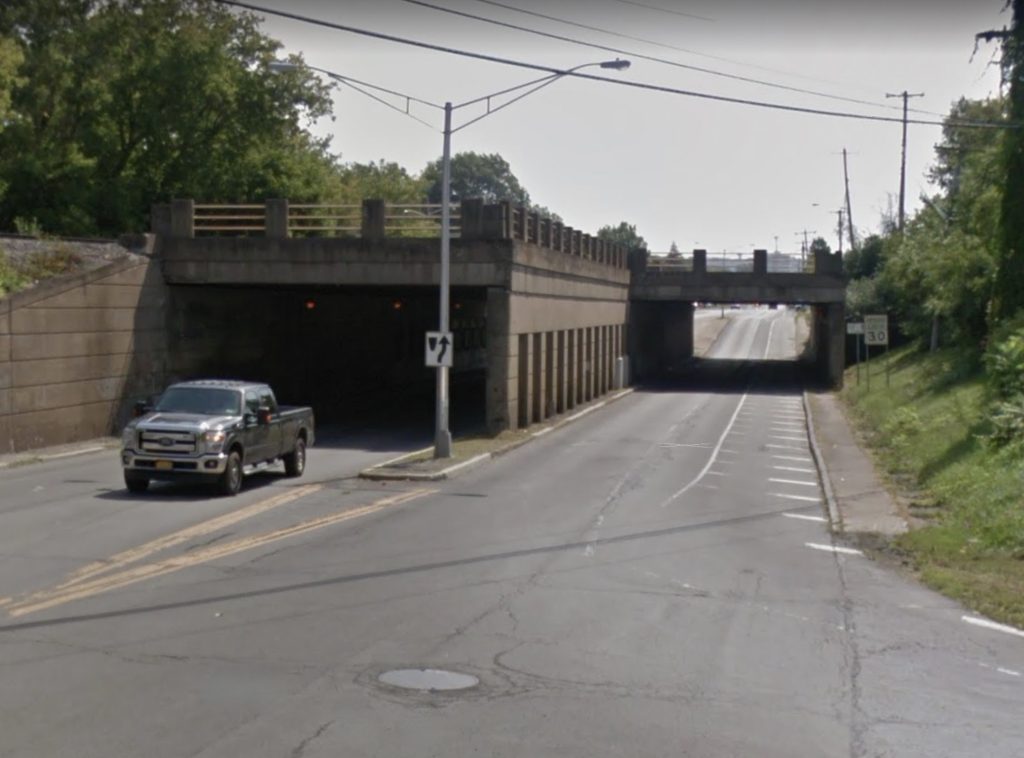
Despite its original recommendation date, the project would take twenty years to come to fruition. After the project was revised in 1943, it finally got on track, pun intended, in 1950, though the estimated costs had escalated to over $480,000. Bids were solicited by the New York State Public Works Department at the beginning of 1950, and Mayor Henry A. Hudson was informed the project would proceed that year, with a projected completion the summer of the following year.
The Watertown Daily Times reported the specifics of the project in its January 17, 1950 edition, including–
Under the plan other work involving municipal streets would be involved.
The road through the underpass would consist of two, 24-foot concrete strips with a six-foot mall dividing them in the center. The railroad tracks would be relaid 55 feet east of the present crossing. After completion the tracks will be 25 feet west of their present location.
There would be a change in the water systems in the streets, although state officials did not today specify how extensive this work would have to be under the plans. A lighting system through the new underpass would be provided by the state.
In connection with the work, New York Avenue, Railroad Street and Summer Street would be affected, according to E. W. Wendell, Albany, deputy chief engineer of the state public works department. Summer Street, now Running east from New York Avenue, would be extended to Mohawk Street and paved its whole length.
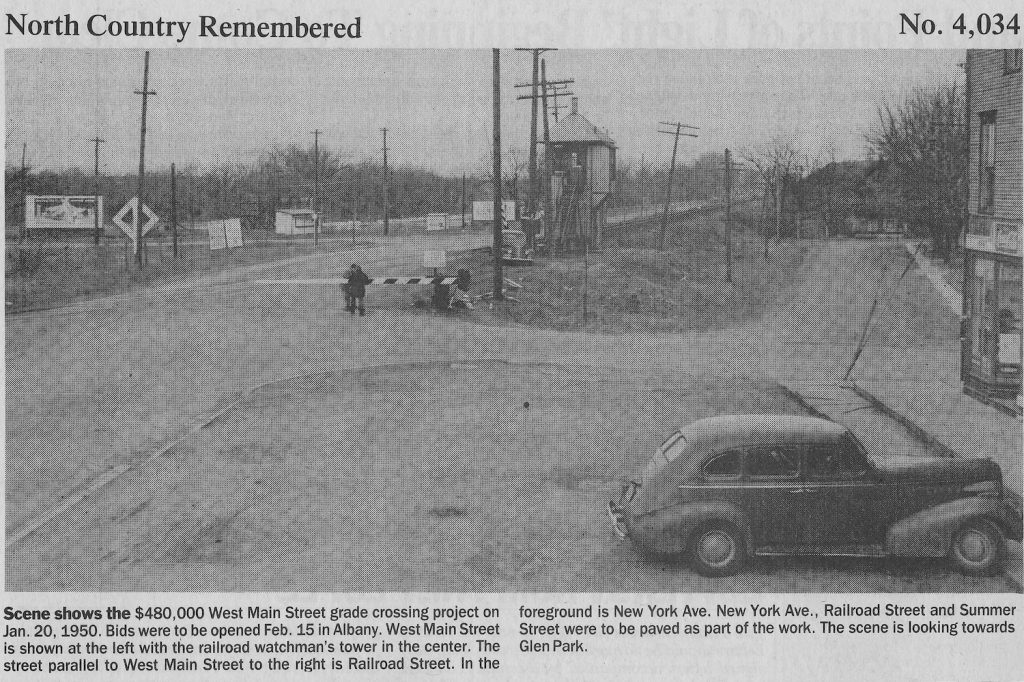
In addition, Mohawk Street was to be paved from West Main to Summer Street and New York Avenue from Summer to where it connected with Railroad Street. The paving project was to allow for the re-routing of traffic during the construction of the underpass, with the New York Central Railroad responsible for a maximum of 15% of the total project cost.
On March 1, it was reported that Albany had awarded the West Main Street grade crossing elimination project to the Collins Brothers, Mechanicville, who submitted the lowest of 15 bids, $95,745 under the estimated budget, with a cost of $394,253.25.
The Times printed a specific schedule of the work to be completed, as follows–
Constructed an I-beam grade separation structure, consisting of two 32-foot spans to carry the New York Central Railroad tracks over West Main Street.
Build an underpass to provide .23 miles of new eight-inch concrete roadway of two lanes, each to be 24 feet wide, to handle motor traffic. Lighting for the underpass is to be erected.
Construct about one-quarter of a mile of 24-foot wide bituminous macadam on nearby streets which would include (a), change of location of VanDuzee street to a point around 200 feet westerly with a new stretch of 500 feet of road, (b), 300 feet of new road on Mohawk Street, (c), 250 feet of new road on New York Avenue and (d), 700 feet of new road on Summer Street.
Installation of necessary grading, drainage and all temporary work which includes detours for the railroad and highway detours during the period of the project’s construction.
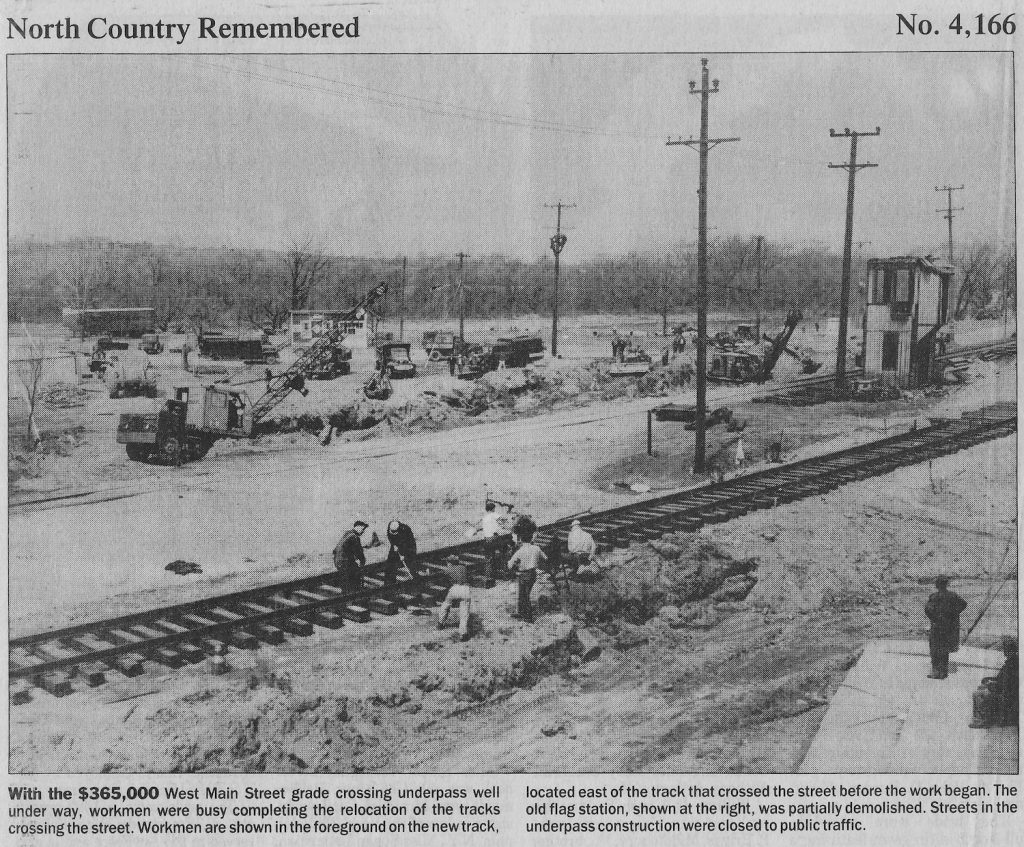
As a result of the project, West Main Street was to be depressed to allow for an even passage overhead by the trains from their current route, a design that has caused numerous drainage and flooding issues over the years.
As work commenced in early April, tracks of the New York Central were relocated and the surface street was rerouted. With the exception of a tank of poisonous chlorine gas leaking one night that couldn’t be stopped until the following morning, the work went fairly smoothly.
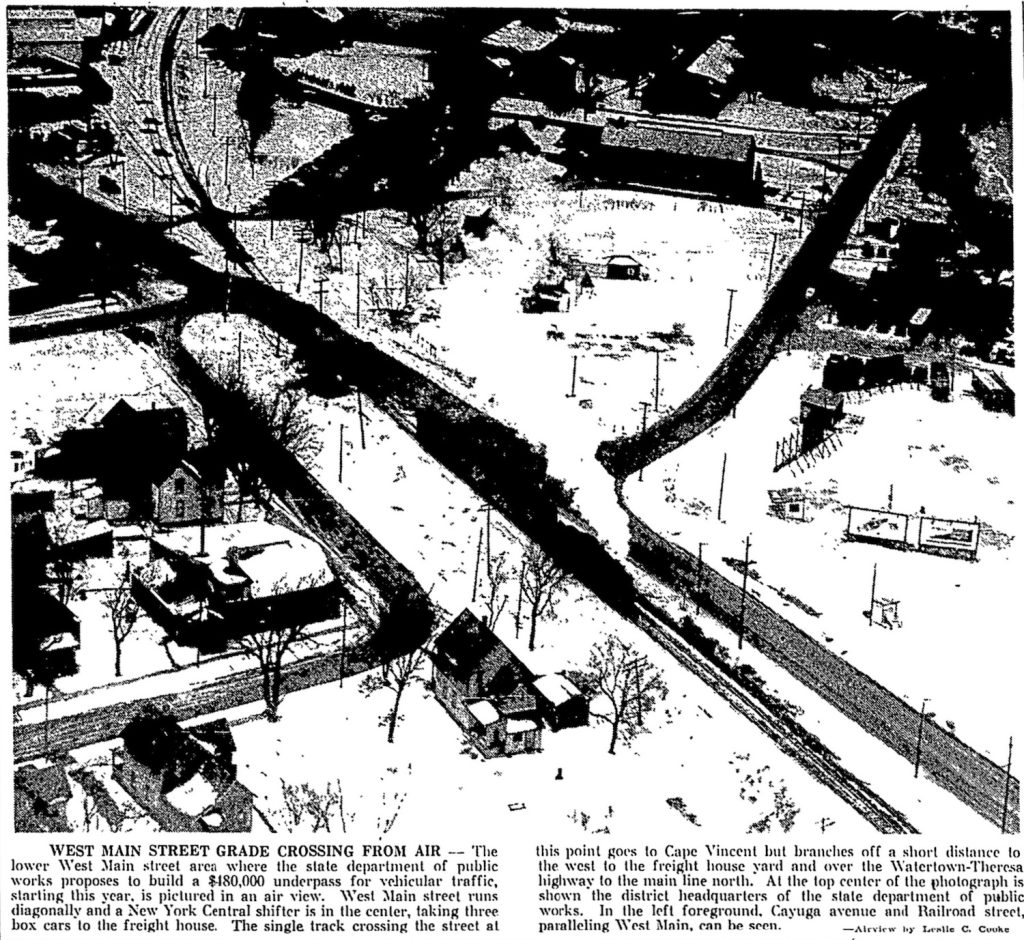
The first New York Central train passed over the new West Main Street underpass for the first time right before Christmas 1950, though work wouldn’t be completed until September as work was suspended during the winter months. The West Main Street grade crossing would undergo revisions during that time, resulting in an additional expense of $4,995 for various changes.
On September 28, 1951, the new West Main Street railroad underpass finally opened to traffic, and workmen began working to tear up the detour running between West Main and VanDuzee Streets. Unfortunately, while it was successful toward its initial goals, unintended consequences ultimately increased the risk of accidents at the junction of VanDuzee. Unfortunately, by December, a serious issue had developed according to The Times–
A hazardous traffic situation at the junction of VanDuzee and West Main Streets, created since the construction of the new West Main Street underpass was completed, is being given serious study by the police traffic bureau, headed by Sgt. Floyd W. Trickey.
As a temporary safety measure, so-called “cat eye” reflectors will be provided by the local division office of the New York state department of public works to outline the two curves on the north end of VanDuzee Street. Later, it is expected, a guard rail may be erected just west of the street junction and possible a municipal street light will be needed to light up the street junction.
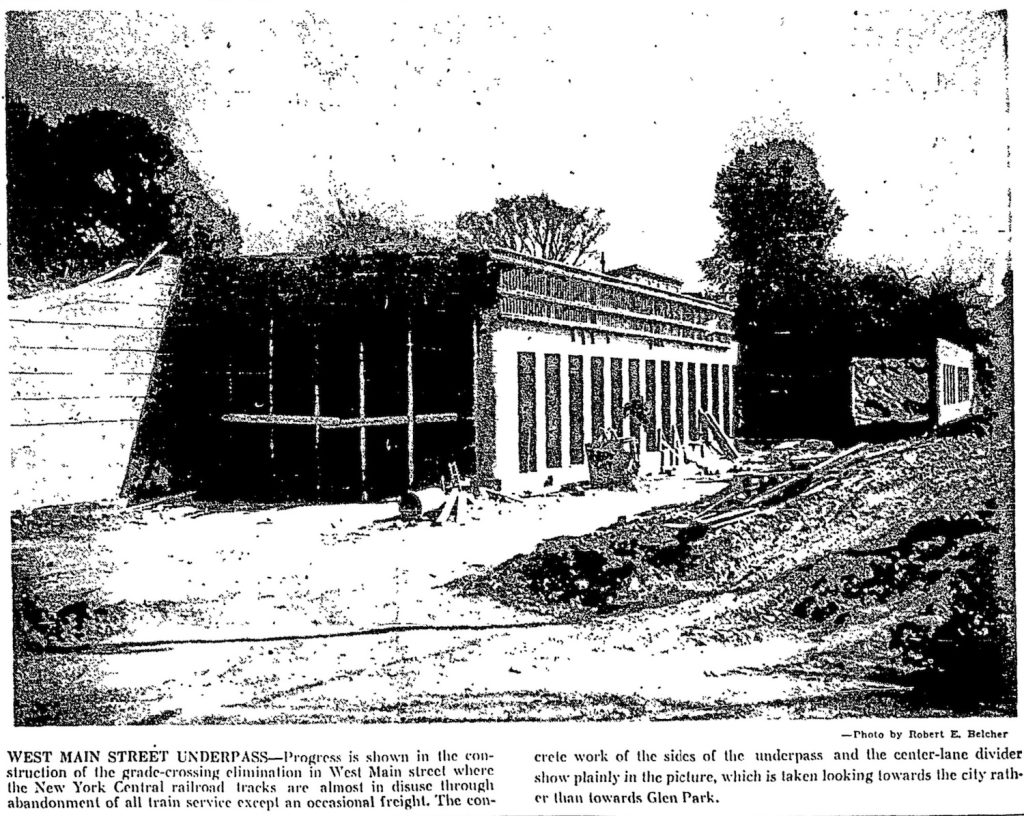
The hazard was especially prevalent at night and during foggy periods for motorists eastbound on West Main Street planning to turn right onto Vanduzee with the absence of street guides. The Times noted that prior to the project, “traffic did not exist on VanDuzee Street which ran in a straight line from Coffeen Street, over the bridge and out to West Main Street.” When construction began, a detour was provided with two curves near West Main Street which remained upon completion.
